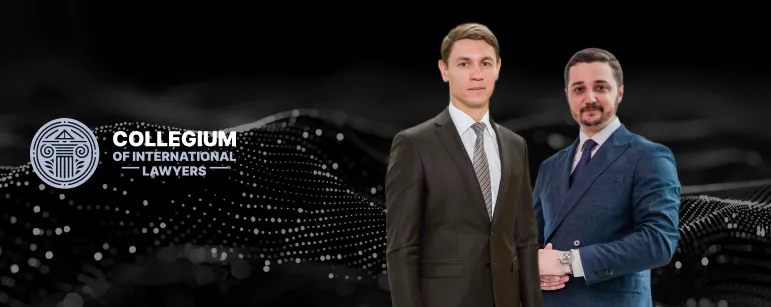
Interpol Orange Notice
When threats to public safety have the potential to cross borders, Interpol issues an Orange Notice to warn national law enforcement agencies worldwide. An Interpol Orange acts as a global alarm bell to alert law enforcement agencies about an imminent threat to public safety, triggering preventive measures.
Being linked to such a notice can have devastating effects to individuals and companies, ranging from travel restrictions and logistics shutdowns to legal scrutiny and reputational damage. In these situations, legal representation from a skilled International lawyer is essential before the matter eascalates.
Our International lawyers conduct a full legal review of your Orange Notice, send official requests to the NCB and CCF, challenge unlawful publications and protect your interests at every stage.

What is an Orange Notice of Interpol
An Interpol Orange Notice is a key tool used to warn member countries about serious and imminent threat to public safety. It is intended for disseminating information about events, objects, or individuals that pose a danger on an international level.
An orange notice may be issued in case of:
- Detection of hazardous substances, explosive devices, or chemical agents;
- Identification of unknown methods of committing crimes (non-standard ways of smuggling weapons or contraband);
- Establishing threats from specific individuals who may pose a danger in an international context (including onboard airplanes or in places of mass gatherings).
After verification, the General Secretariat of Interpol publishes it in the secure I-24/7 network, where it becomes available to all member states.
Although the Interpol Orange Notice doesn’t carry automatic legal consequences, it may lead to cross-border travel restrictions, business reputation fallout, and international operations shutdowns. Therefore, seek legal support promptly to challenge these notices before your resources become limited.
Goals and objectives of the orange notice
The Orange Notice primarily warns law enforcement agencies when there’s a real threat to public safety, national infrastructure, or citizens’ health. One of the priority tasks of notice is the dissemination of information about hazardous substances (toxic chemicals, radioactive materials, explosives, or biological agents) that may be used for terrorist purposes or in the commission of serious crimes.
In addition, the orange notice allows for warnings about new methods of committing crimes (non-standard methods of smuggling weapons or modified covert surveillance devices). This is especially important in the context of rapid technological development and the emergence of new threats.
The notice can also be used to warn about a specific person’s criminal activities that pose a potential threat to public safety. In this context, it can be directed to airlines, border services, security services, and other interested entities.
Who and in what cases initiates the issuance of an orange notice?
The main initiators are the National Central Bureaus of the Interpol member countries. International organizations (WHO, IAEA, UPU, and other structures) can also initiate the publication of an orange notice through cooperation mechanisms with Interpol. This is especially relevant in cases of the spread of biological or chemical threats, epidemics, or incidents related to radioactive substance leaks.
The Interpol General Secretariat has the authority to issue orange notices on its initiative if the information received from various sources indicates the need for an urgent international response. For example, if incidents involving similar unknown substances are recorded in different countries, Interpol can independently warn other states to take security measures.
In practice, the issuance of an orange notice is initiated in cases of detection of dangerous chemical or biological agents, new methods of concealing weapons in luggage and parcels, threats against international events or public places, or movement across borders of suspects posing a threat.
What information is contained in the orange notice?
The Interpol Orange Notice features a detailed description of a potential threat — it could be a dangerous object, substance, person, or a specific method of action. For example, if it concerns an improvised explosive device, its technical characteristics, activation method, and potential damage radius are specified. If the threat comes from a specific person, their identifying data, photographs, and information about alleged actions may be provided.
The notice also includes recommended precautionary measures to minimize risks. That my include implementing additional border controls, increasing inspections in places of mass gatherings, confiscating certain goods, or informing personnel about a potential threat.
In most cases, the notice contains the contact details of the initiating NCB or the General Secretariat of Interpol. It is there that any useful information should be sent if the person or object mentioned in the notice has been found.
Additionally, if technically possible, the notice is accompanied by photographs, diagrams, charts, or technical descriptions of the threat. This is especially important when it comes to previously unknown devices, methods of concealing weapons, new types of drugs, or hazardous chemicals.
Types of threats covered by orange alerts
Interpol Orange Notices are designed to warn law enforcement worldwide about imminent threats that could cause serious harm across borders. They typically cover:
1. Hidden or disguised hazardous items
One of the key categories includes explosive devices, weapons, and hazardous substances disguised as harmless items. These can be improvised explosive devices hidden in suitcases, toys, or household appliances, firearms modified for concealment, toxic or radioactive substances placed in containers labeled as regular products.
2. Hazardous Materials (CBRN)
The orange notice also covers chemical, biological, radiological, and nuclear substances (CBRN) that can be used for criminal purposes. Examples include toxic substances used in acts of political or criminal terror, disease agents (viruses, bacteria) intentionally spread to cause harm, as well as radioactive materials intended for creating so-called “dirty bombs.” This colour-coded notice allows law enforcement agencies to be quickly alerted about such substances and to take preventive measures.
3. Criminal methods and tactics
Interpol issues orange notices in cases of new methods of committing crimes, especially if they pose a serious threat to multiple countries. This may include methods of hacking infrastructure security systems, technological tricks allowing circumvention of aviation or customs security, or schemes for delivering weapons or drugs bypassing international controls. Such notices help law enforcement agencies stay informed about innovative criminal approaches and promptly adapt countermeasures.
4. Threats from specific individuals or criminal groups
Another category is specific individuals or groups that have been identified as a source of immediate threat. These can be serial criminals (arsonists, poisoners, terrorists), radicalized lone actors prone to violence, criminal syndicates preparing terrorist attacks, or large-scale destabilization actions.
How to check the list of orange notices of Interpol?
To begin, you need to go to site. This is the official international portal of the Organization, where up-to-date information on all types of colour-coded notices is posted. On the main page of the website, select the Notices section. Then go to the subsection Types of notices, where all color-coded notices are presented. Find the category Orange Notice and click on it.
Unlike Interpol red notices, orange notifications are not always published online, especially when it comes to methods of crimes or dangerous substances. However, Interpol may publish some examples for broader safety purposes. On the page, you will see a list of notices with brief information: description of the threat, publication date, and initiating country.
If the notice is published, it can be opened and reviewed. If not, access to full information can only be obtained by authorized entities (law enforcement agencies or accredited lawyers). When the necessary information isn’t available online, directly contact the General Secretariat.
Please note: Individual requests regarding the status of an orange notice can only be processed if there is a legal interest and the relevant documents are provided.
Each Interpol member country has its own national central bureau (NCB). This is a division under the Ministry of Internal Affairs that handles coordination with international police. Contacts can be found on the official map of Interpol members.
If you are concerned that your name or company may be associated with an unfounded notice, or if you wish to act through professional representatives, it is strongly recommended to use the services of lawyers experienced in international matters and interaction with Interpol.
Our legal team provides comprehensive services: checking for mentions in Interpol notices, interaction with the General Secretariat and NCB on behalf of the client, legal support in submitting requests, challenging notices, full protection of the client’s interests within the framework of international law.
Removal of the orange Interpol notice
If your name, cargo, or company has been wrongly linked to an Orange Notice, the consequences can be immediate and damaging—ranging from shipment seizures to cross-border investigations and loss of business contracts. Here’s how to remove this notice:
Step 1. Legal assessment of the situation
The first stage is the legal analysis of the notice and the circumstances of its publication by international lawyers:
- They check whether there is an active orange notice associated with the client.
- Analyze how it complies with the Statute of Interpol and its Rules on the Processing of Data.
- They identify grounds for its removal: lack of proof of the threat, violation of procedural rules, interference by third countries, etc.
Unlike red notices, orange notices are more often aimed not against the individual but at warning about dangers. However, even an indirect mention can damage business’s reputation or freedom of movement.
Step 2. Preparation and collection of evidence
The legal team collects documents confirming the falsity or obsolescence of the threat, evidence of the absence of intent or connection of the client to criminal activity, expert opinions, reviews, and official letters from state or international structures. The lawyers prepare a reasoned legal memorandum that substantiates the violation of Interpol regulations and the necessity of removing the notice.
Step 3. Submission of an appeal to the CCF Commission
If the notice directly or indirectly affects the client’s interests, the appeal is sent to the CCF for review. The statement must include the personal data of the applicant (or authorized representative), the essence of the complaint, a description of the violation of Interpol’s principles, attached evidence, and a request for the removal or correction of the notice. The statement is drafted in one of Interpol’s official languages: English, French, Spanish, or Arabic.
Step 4. Communication with Interpol and protection of the client’s interests
After filing a complaint, lawyers interact with the Interpol General Secretariat and other bodies, respond to additional requests from the CCF, monitor compliance with deadlines and procedures, and provide the client with regular updates on the progress of the case. The review process may take from 6 to 12 months. In special cases, the CCF may request clarifications from the state that initiated the notice.
Step 5. Receiving the solution and removing the notice
Upon completion of the case analysis, the CCF makes a decision. If the complaint is upheld, the orange notice is removed or corrected, and information about it is deleted from Interpol’s systems. The client receives an official response.
Comparison with Interpol notices
Unlike the red notice, initiated to detain and extradite a specific individual, the orange one has an informational and preventive nature. It is not connected with an arrest warrant and does not imply the application of criminal law measures to any person.
A red notice focuses on the search for suspects in serious crimes, while an orange notice can be issued even without a suspect if it concerns bomb-laden packages or new forms of chemical threats. Additionally, an orange notice can be issued more quickly and at the initiative of a broader range of sources, including international organizations.
Legal support in challenging orange notices
Our lawyers have extensive experience working with Interpol notices, including rare cases of improper issuance of orange notices. We provide comprehensive legal assistance, including:
- Analysis of the grounds for the notice: we conduct a legal examination of the materials based on which the notice was issued, to identify violations of Interpol rules or international law;
- Preparation of a reasoned request for removal: drafting an appeal to the General Secretariat and the CCF Commission with legal arguments and supporting evidence;
- Legal support for the appeal procedure: representing the client’s interests at all stages, from applying to receiving the CCF decision;
- Confidentiality and protection of the client’s interests: we guarantee complete confidentiality of the case and prevention of information disclosure;
- Additional legal protection: we provide consultations on related issues, including reputational risks, transit detentions, and interaction with national authorities.
We act in strict accordance with Interpol’s constitution, including the Statute of the CCF Commission and the Framework on Access to Data and the Right to Rectification of Information. Even in the absence of charges or court decisions, the presence of information in an orange notice can lead to serious consequences: delays at border crossings, visa denials, and blocking of business operations. Without legal support, such situations can drag on for years and cause significant damage.
If you are faced with an unfair or erroneous mention in an orange Interpol notice, contact us as soon as possible. We will thoroughly analyze your situation and offer an effective legal defense strategy. Contact our team to discuss your case confidentially.

FAQ
What is an Interpol orange notice?
Orange Notice is a warning about a serious and imminent threat to public safety. It is used to inform police, government agencies, and international organizations about potential threats stemming from disguised weapons, bomb parcels, and other dangerous materials or events. This is a preventive measure aimed at protecting citizens from terrorist acts, organized crime, and other threats.




